The area along the California coast is one of the most stunning drives in the world. But if you search for the most photographed places within the breathtaking section of the route – Big Sur, look no further than these 7 destinations.
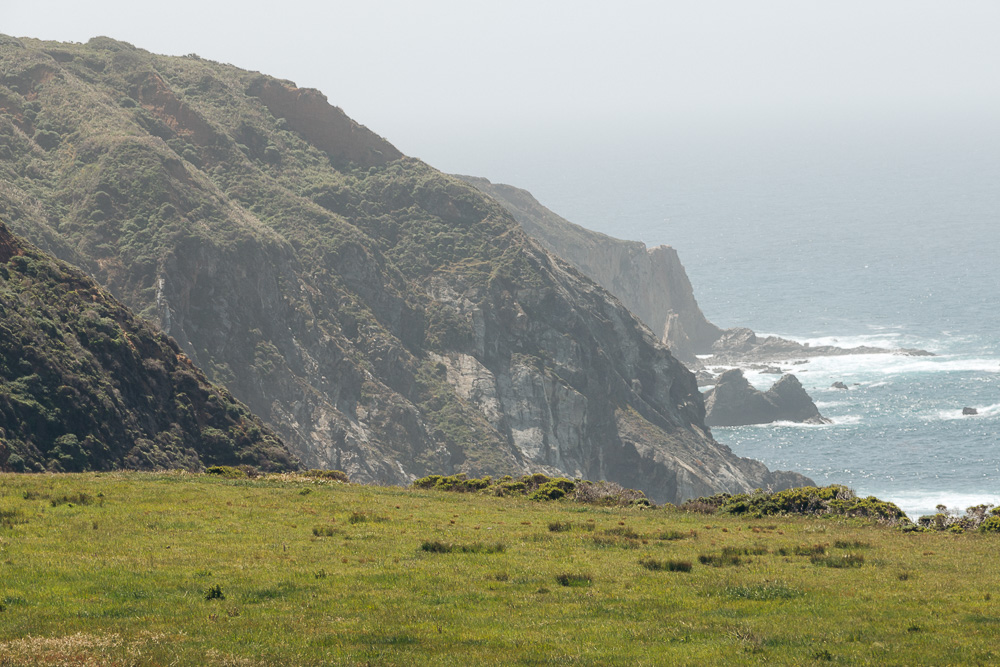
A Guide to the Most Photographed Places along Big Sur Drive
The 90-mile-long Big Sur is the epitome of the natural splendor and magnificence. Its rugged shoreline along with sweeping hills have been objects for hundred of thousands of photographic pursuits. People all over the world come to the central and northern part of California to explore its spectacular terrain and a handful of manmade structures.
The scenic drive never shies away from this excessive attention. Quite the opposite, Big Sur’s plentiful vantage points keep inspiring amateurs and professional photographers alike throughout the year.
During our two visits to Big Sur, I’ve collected a vast photo diary. Some of my pictures depict the most sought-after landmarks. Many other destinations don’t have specific addresses. The unknown places in these photos, however, further dissect the extraordinary beauty of Big Sur.
Yet you haven’t come here to hear that you need to go with a flow and find your own treasured destinations to photograph along the California coast. You need specific locations. And I’m here to deliver you the 7 most photographed places in the Big Sur area.
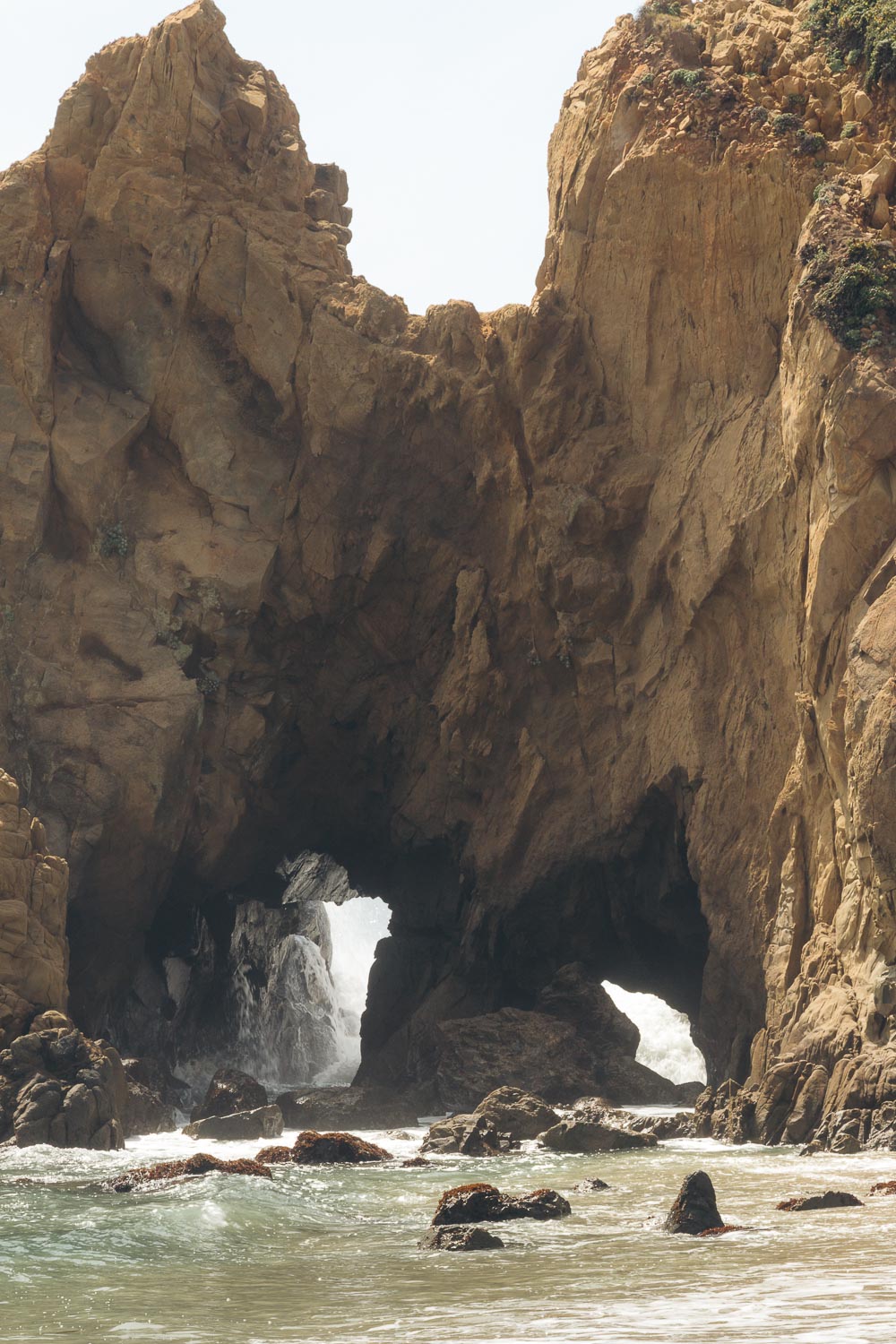
TOP 7 PLACES TO PHOTOGRAPH ALONG BIG SUR DRIVE
1. Bixby Creek Bridge
One of the symbols of Big Sur, the Bixby Creek Bridge is truly one of the most visited and photographed places along Highway 1. The manmade structure built in 1931-1932 sits 6.5 miles south of Garrapata State Park.
Direction: If you start your Big Sur photography journey in San Simeon and head north, keep the eyes peeled for the Bixby Creek Bridge 21 miles north of Julia Pfeiffer Burns State Park.
The great Big Sur drive, however, can be tricky in that way that not all its destinations are properly marked. Relying on the road signs here may not alway help your photo endeavors. Yet you can never miss the iconic Bixby Creek Bridge.
The 280-foot structure towers over the rugged coastline and is a part of Highway 1. Another now perpetual feature of the site is a huge crowd of spectators and photographers congregated on the both side of the main landmark of the Big Sur area.
TIP: The ample viewpoints nearby surely allow for such congregations. If you look for unique vantage points to photograph the Big Sur area near its famous bridge, choose farther off-road lookouts. These areas are almost always empty. The Bixby Creek Bridge, however, looks even more spectacular, surrounded by the lush hills and untamed ocean waves.
Photography Tip: Be sure to bring a telephoto lens. With this, you can easily zoom in on the area that catches your eye and photograph away the oozing opulence of Big Sur without the maddening crowds around.
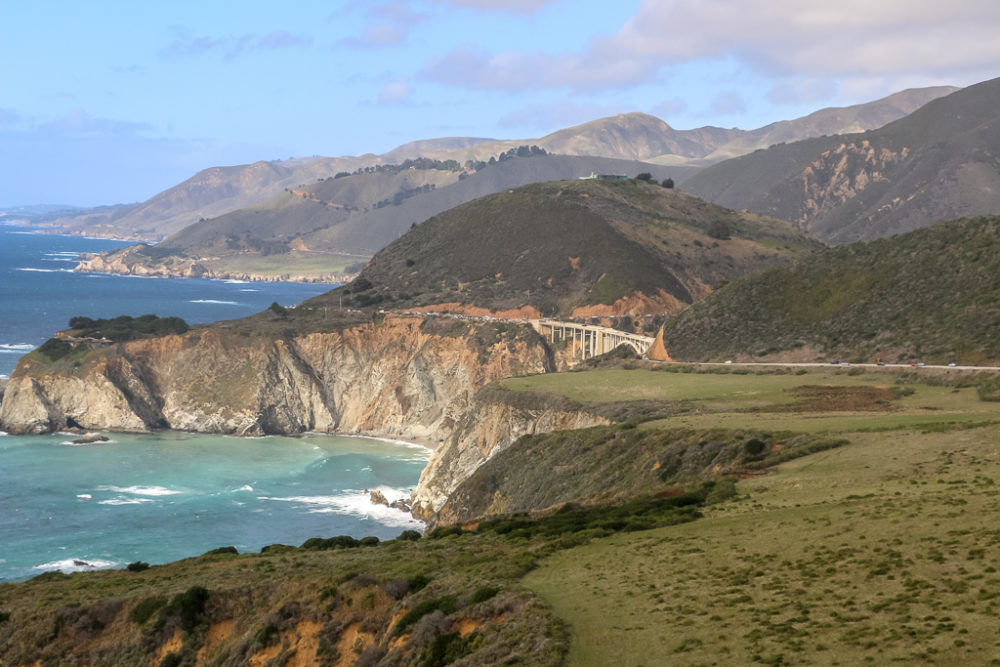
2. McWay Falls
The 80-foot drop in Julia Pfeiffer Burns State Park has been one of the most intriguing places to photograph in Big Sur for decades. The single-legged waterfall plunges from a cliff covered with lush vegetation.
Instead of teasing the photographers with a rainbow that would normally appear above the waterfall pool, McWay Falls disperses directly into the Pacific Ocean. When the tide is low, the dropped water lingers on a beach. Just long enough to create a tiny, temporary stream that transfers the water where it belongs – to the ocean.
Best Time to Photograph: The professional photographers flock to this Big Sur’s attraction mostly during sunrise and sunset. Invigorated by subtle pink and purple hues from above, the site presents its most photogenic sides.
An overcast day, which Big Sur has in abundance especially in winter and early spring, also has its own charm and appeal for the photographers. It hides harsh sunlight, contributing to a dreamy photo collection.
TIP: Regardless of the time and season you decide to photograph McWay Falls, be sure to bring along a zoom lens. The secluded waterfall enjoys a complete tranquility that must not be disturbed. A series of vantage points sit along the 0.5-mile McWay Falls Overlook Trail. Walking off the trail and getting closer to McWay Falls is not allowed.
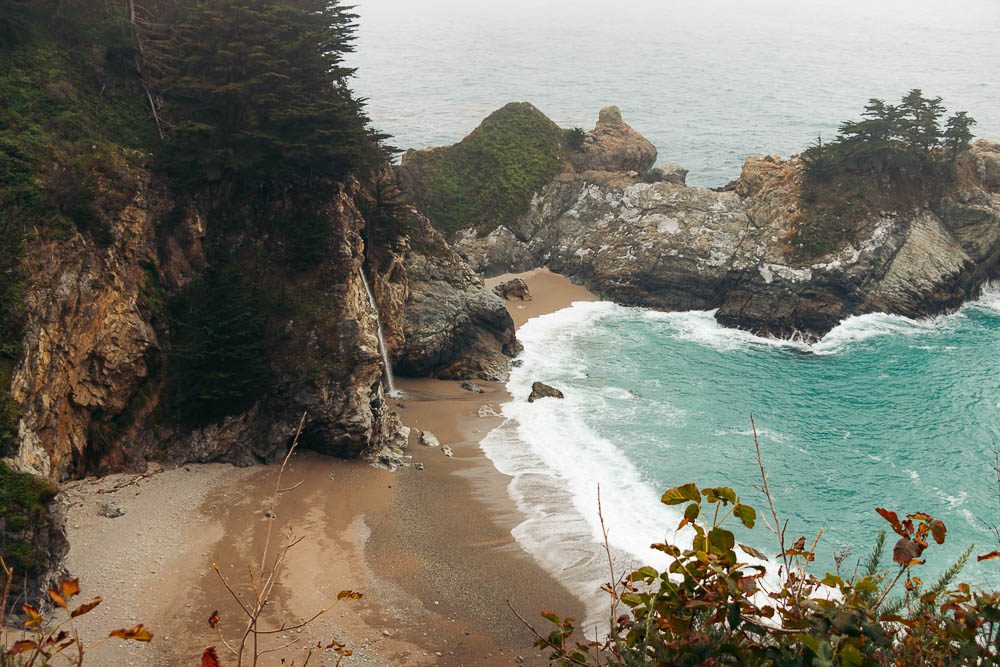
3. Soberanes Point Trail in Garrapata State Park
Ironically, the Soberanes Point and Whale Peak Trail is one of the most secluded photographed places in Big Sur. The 2-mile loop is located in Garrapata State Park.
A lack of roadside signs and trail markers contributes to an often overlooked nature of the park. Yet those who know about the photogenic features of the Garrapata area regard it as a Big Sur’s photographer’s paradise.
The quest for the unique photo destinations starts a short walk from Highway 1. Here, brighting up every photography journey, Big Sur bestows of its visitors panoramic views of towering bluffs descending all the way to the water. The powerful ocean waves crush on these rocks and sporadic sandy beaches along the coast, adding texture and color to the images.
The Best Time to Photograph: In spring, wildflowers adorn the Garrapata hills with vibrant red, yellow, and lilic hues. Capturing this visual overload becomes a high priority for the Big Sur’s photographers. Consequently, the area sees more visitors with cameras now than during the other seasons.
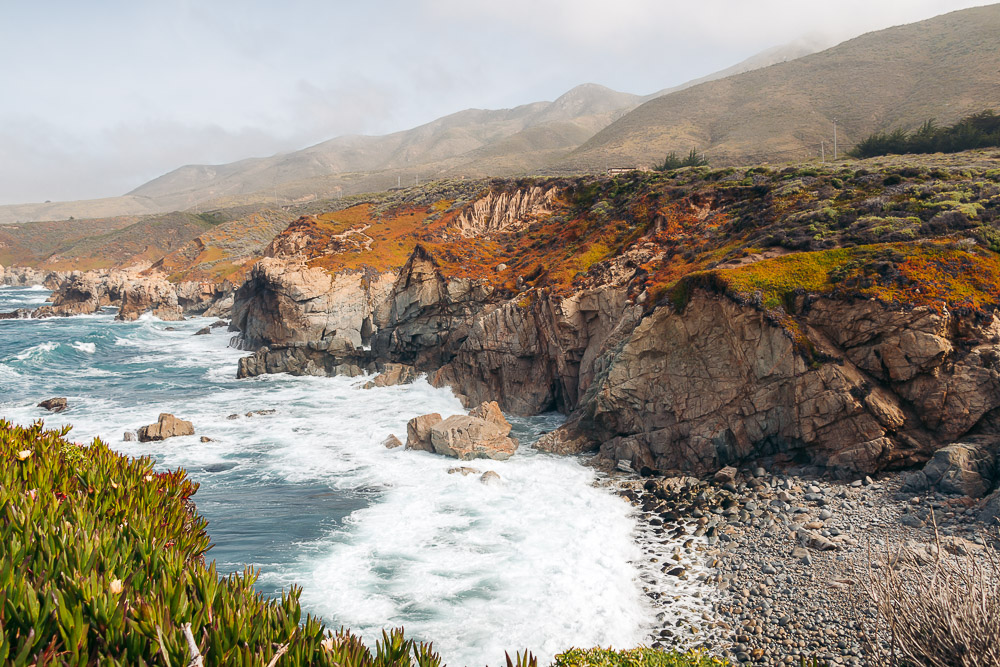
4. Calla Lily Valley
Another member of the Garrapata State Park’s family, the Calla Lily Valley is flooded with the Big Sur’s photographers from mid-February through April. During this time, wild calla lilies spring up.
Stretching their beautiful large heads to the sun, the flowers cluster along a bubbling stream. The tiny creek seems to talk to every white bloom before rushing through a sandy beach, nestled behind the valley, to the ocean.
TIP: The best time to photograph this secluded area of Big Sur is early in the morning or late in the afternoon. During the day, the valley often hosts way too many flower lovers that can’t wait to capture the natural beauty around with their cameras or phones.
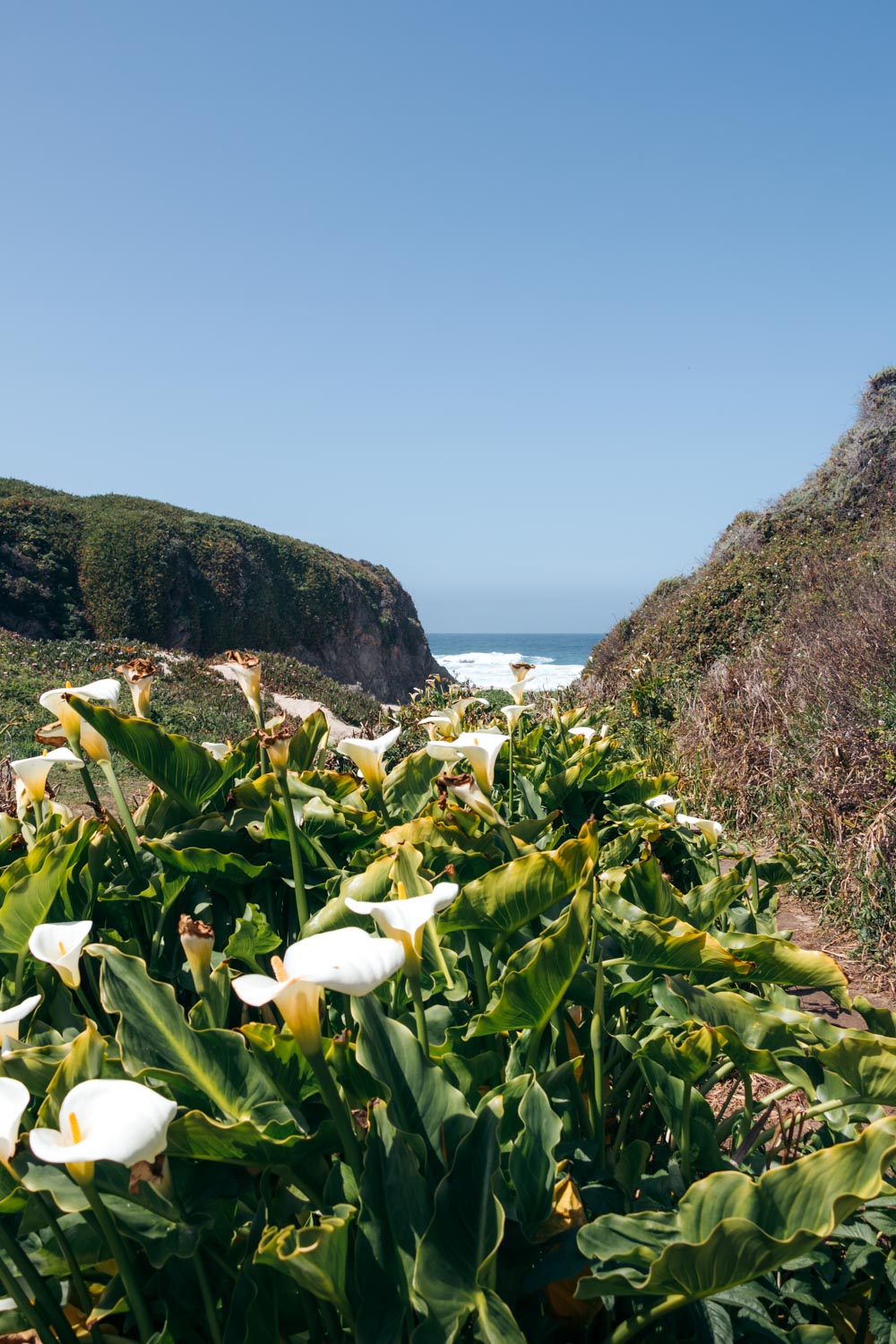
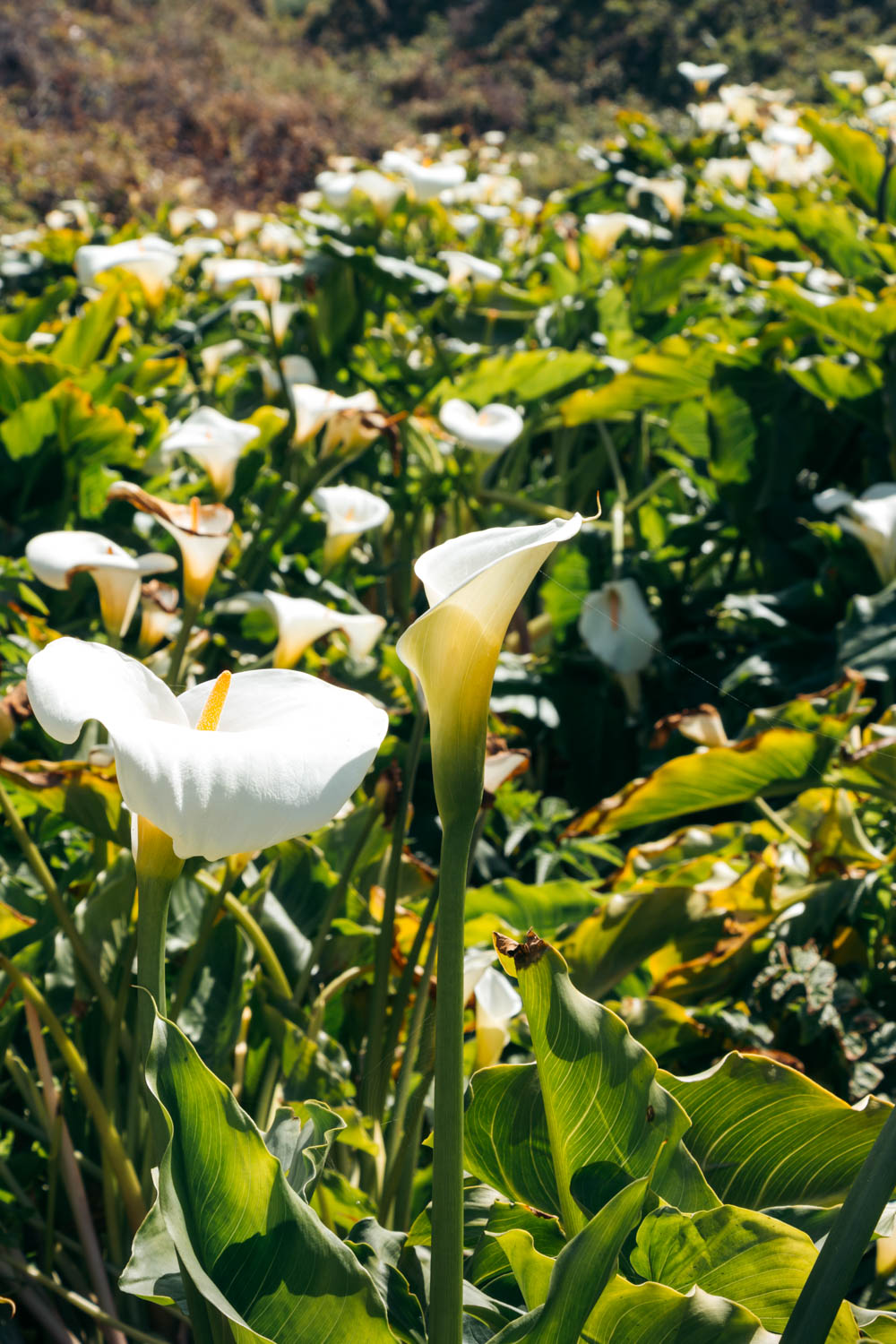
5. Pfeiffer Beach
Those who’ve ever been or planned to travel to Big Sur are fully aware of the photogenic appeal of Pfeiffer Beach. Famous for its purple sand scattered along a tiny creek, the area is a primary destination for local and visiting photographers alike.
The professionals and shutterbugs gather in the area mostly during sunset or sunrise when the vibrant tones embrace distinctive rock formations towering over the beach. Winter months bring the most profound colors to the coastline.
The Best Time to Photograph: So if you’re a professional photographer, make sure to shoot the splendid Keyhole Arch that gives a remarkable light show in this area of Big Sur anytime from November through January.
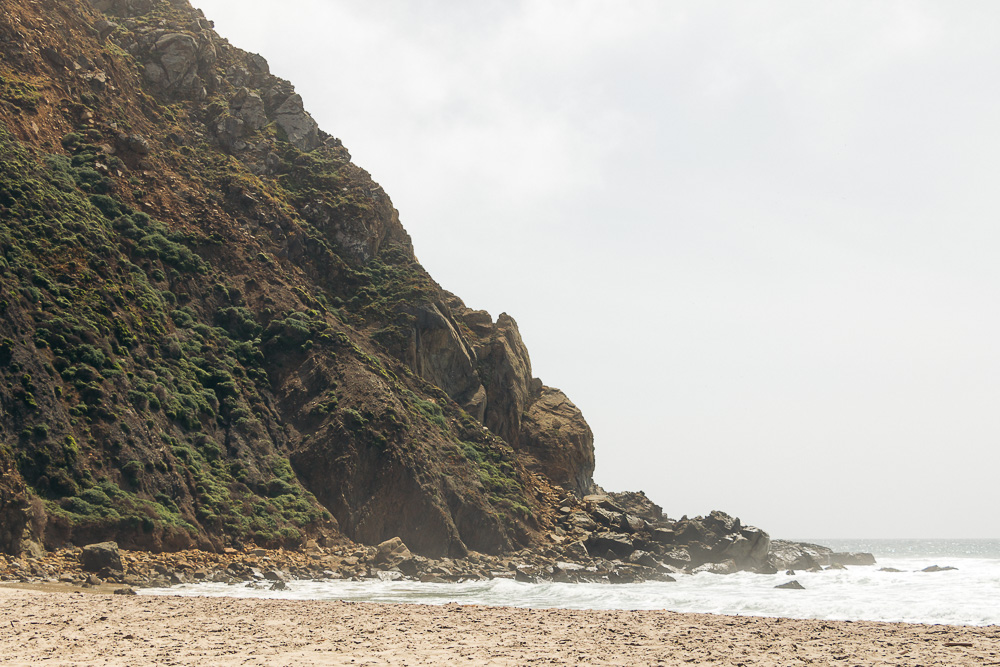
6. China Cove
Point Lobos State Natural Reserve is home to several sites the Big Sur’s photographers can’t ignore. The 0.8-mile Bird Island Trail with picturesque China Cove below is the most popular of them.
The cove embraced by towering cliffs allures with a white, sandy beach and turquoise color waves. The surroundings already looks unreal, offering a plentitude of vantage points to shoot from from the trail above. But if you look down at it long enough, you can even spot a female seal teaching her cute pup to swim.
TIP: You can photograph the irresistible duo enjoying one of the most beautiful places in Big Sur on your phone camera. But for those unbelievable close-up shots, you should bring along a telephoto lens. This gear will also be your dear friend when you reach a wooden deck overlooking bird islands, inhabited by a wide range of California’s wild feathered creatures.
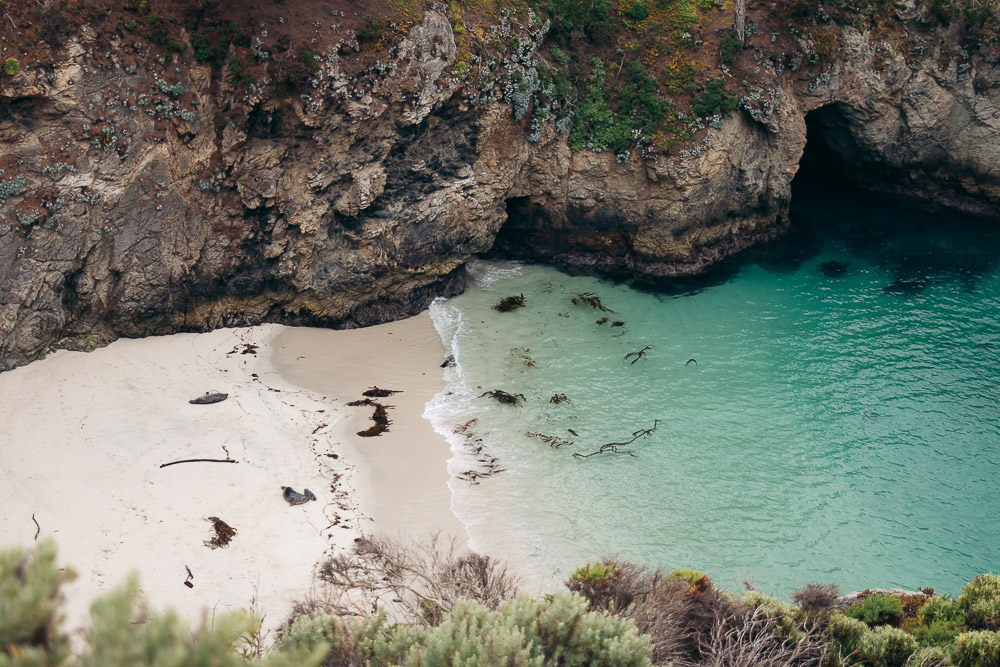
7. Sand Dollar Beach
Many travelers, including professional photographers, skip Sand Dollar Beach, one of a few places that portrait the natural beauty of Big Sur without requesting any hiking or detouring in exchange.
The longest beach in the area sits in southern Big Sur, 30.5 miles north of San Simeon. With its always reliable companions – the tireless ocean waves that crash on the beach in the chaotically organized manner and frequent surfers – Sand Dollar Beach offers a profusion of photo opportunities, rain or shine.
In early spring, the hills above the crescent sandy stretch decorate themselves with yellow and red wildflowers. The pop of color adds a delicate charm to the severe coastline. If you look for the ideal place and time to photograph the splendor of Big Sur, you find it right here and now.
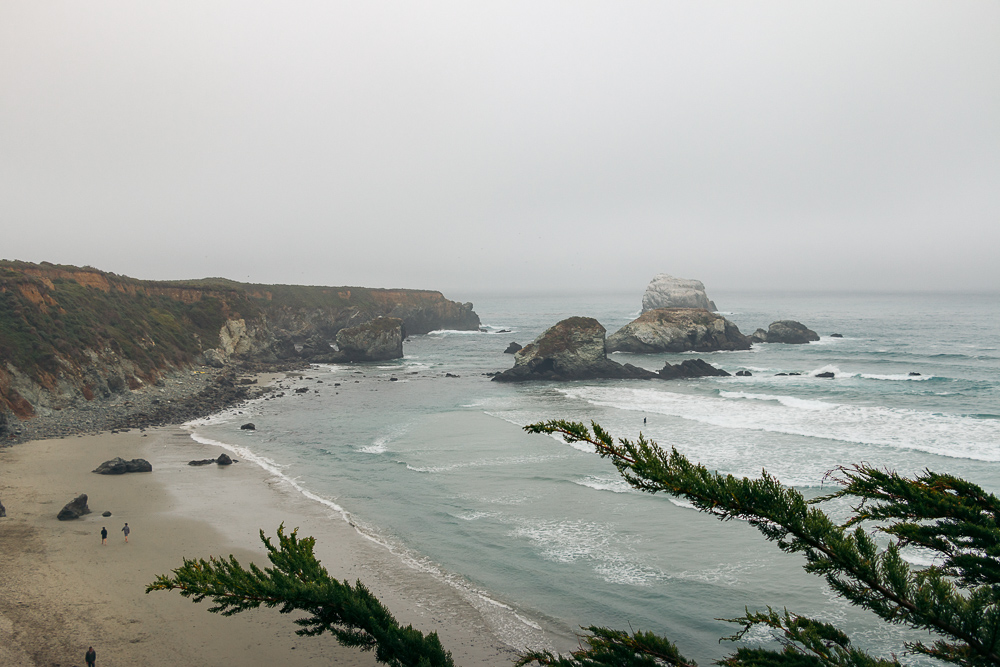
The Most Photographed Places in Big Sur: Map
The 7 Most Photographed Places in Big Sur: Tips and Things You Need to Know
- Bring along a telephoto lens. Some places in Big Sur can be photographed only from a distance. The same goes for shooting the wildlife along the scenic California coast. While you can get by without any expensive camera equipment, a zoom lens helps you capture the details and make your pictures look professional.
- Photograph the Big Sur’s places at sunrise or sunset. The extra pop of color that invigorate the sky above the coast enhances your Big Sur’s photography tenfold.
- Overcast weather works wonders for your Big Sur’s photo gallery. While shooting during the sunrise or sunset is ideal, it’s not always possible. Furthermore, the first sunlight might have hard time breaking through dense fog that is not a stranger to the coast. Use this overcast weather to your advantage. Instead of heading home, get out your camera and capture the moodiness of Big Sur and the nearby places. The region looks dreamy at this time. You certainly don’t want to miss it.
Read Next
- California Road Trip: A 4-Day Adventure in Yosemite, Pinnacles, and Big Sur
- The Piedras Blancas Northern Elephant Seal Rookery in San Simeon, CA
- Big Sur Photo Diary
- 3 of the Best Cross-State California Road Trips